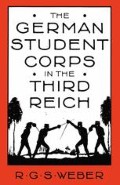Abstract
From the period of the first European universities student organisations existed for the purpose of representing the interests of their members. This perhaps seems a truism, but it must be kept in mind when examining the diversity with which the various organisations of fraternities developed. To the untutored eye in the late twentieth century it is perhaps difficult to see any great difference between the pre- and the post-Reformation student associations, or indeed between those of the mid-nineteenth century. But each of these manifestations resembles certain aspects of the period in which it first appeared. The Pennalen and student orders correspond to the continued disquiet and despotism found following the Thirty Years’ War; the Kränzchen illustrate an application of Enlightenment principles within academe; the Deutsche Burschenschaft indicates the rise of German nationalism in its various strains following Napoleon’s defeat; and the Reform Movement of the mid-nineteenth century is reflected in the foundation of groups such as the Deutsche Sängerschaft. The Deutsche Wehrschaft which was constituted after the First World War and antedated its founding to the signing of the Versailles Treaty, gave a resounding indication of the rise of völkischem nationalism and in retrospect, can be seen to have served as a precursor in the establishment of the NSDStB in 1928.
Access this chapter
Tax calculation will be finalised at checkout
Purchases are for personal use only
7 Summary and Conclusions
F. L. Carsten, ‘The Introduction’, in H. Graml et al., The German Resistance to Hitler (London: B. T. Batsford Ltd, 1966) p. viii.
W. Barthold, ‘Macht und Ohnmacht der Ideologien in den Corps’, Einst und Jetzt, vol. 27, 1982, p. 83.
Copyright information
© 1986 R. G. S. Weber
About this chapter
Cite this chapter
Weber, R.G.S. (1986). Summary and Conclusions. In: The German Student Corps in the Third Reich. Palgrave Macmillan, London. https://doi.org/10.1007/978-1-349-18073-8_7
Download citation
DOI: https://doi.org/10.1007/978-1-349-18073-8_7
Publisher Name: Palgrave Macmillan, London
Print ISBN: 978-1-349-18075-2
Online ISBN: 978-1-349-18073-8
eBook Packages: Palgrave History CollectionHistory (R0)

